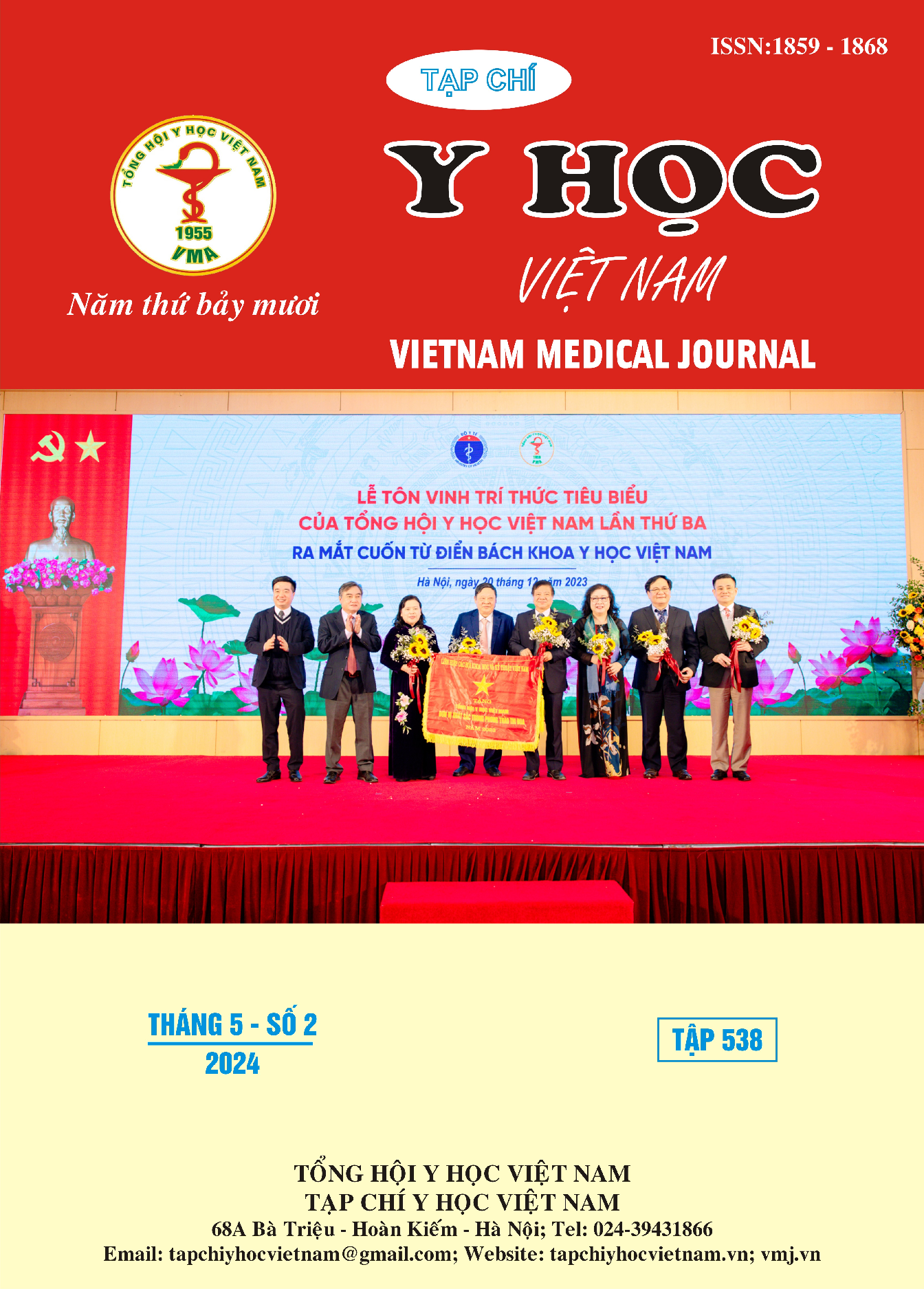MATERNAL AND FETAL OUTCOMES IN PRE-ECLAMPSIA WITH SEVERE FEATURES AT HA NOI OBSTETRICS AND GYNECOLOGY HOSPITAL
Main Article Content
Abstract
Objective: To evaluate the maternal and fetal outcomes in severe pre-eclampsia at Ha Noi Obstetrics and Gynecology Hospital in 2022. Materials and method: A retrospective cross-sectional study included in 125 pregnant women diagnosed with pre-eclampsia at Ha Noi Obstetrics and Gynecology Hospital in 2022. Results: There were a total 125 women with preeclampsia (PE), 96 patients (76.8%) were diagnosed with PE with severe features. Of these, 91.7% were treated with combination therapy for treatment hypertension (two or more antihypertensive drugs). Among those with gestational age under 34 weeks, 76.7% were given antenatal corticosteroids and among those with gestational age under 32 weeks, 59.5% received antenatal Magie sulfate as an infant neuroprotectant. Among these, induction of labor was only 5.2%, 8.3% had spontaneous labor and 86.5% had elective caesarean section, maily due to the complications of preeclampsia. The most common neonatal complication were prematurity (65.6%) and low birth weight (69.8%). Conclusion: Gestational age at the termination of pregnancy improved significantly. Antenatal management and medication treatment will markedly change obstetric outcomes. Prematurity, growth restriction and low birth weight are severe complications to be anticipated appropriately in preeclampsia.
Article Details
Keywords
maternal outcome, fetal outcome, severe preeclampsia.
References
2. L. Duley (1992). Maternal mortality associated with hypertensive disorders of pregnancy in Africa, Asia, Latin America and the Caribbean. Br J Obstet Gynaecol, 99 (7), 547-553.
3. T. L. G. Trương (2022). nghiên cứu giá trị của siêu âm doppler trong tiên lượng tình trạng sức khỏe của thai ở thai phụ tiền sản giật. Tạp chí Điện quang & Y học hạt nhân Việt Nam, (29), 48-48.
4. B. M. Sibai (2005). Diagnosis, prevention, and management of eclampsia. Obstet Gynecol, 105 (2), 402-410.
5. N. T. Vinh (2018). Nhận xét về tình hình điều trị tiền sản giật thai nghén từ 28-3 tuần tại Bệnh viện phụ sản trung ương, Luận văn bác sỹ chuyên khoa II, Trường Đại học y Hà Nội.
6. M. D. Simona Constantinescu, Andrei Chilianu, Radu Vladareanu. (2013). Magnesium Sulfate: Fetal Neuroprotective Role in Reducing the Risk of Cerebral Palsy. Donald School J Ultrasound Obstet Gynecol 2013;7(1):98-104.
7. V. T. Nguyễn and T. H. Nguyễn (2017). Kết quả xử trí tiền sản giật tại Bệnh viện Phụ Sản Trung Ương trong năm 2015. Tạp chí Phụ sản, 15 (2), 24 - 29.
8. S. Abdel-Hady el, M. Fawzy, M. El-Negeri et al (2010). Is expectant management of early-onset severe preeclampsia worthwhile in low-resource settings? Arch Gynecol Obstet, 282 (1), 23-27.


